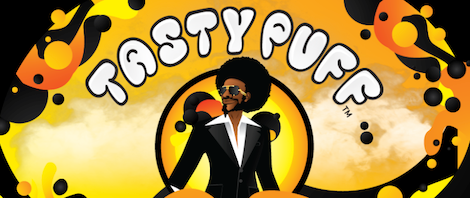
Welcome to Cannabinoid Clinic, an education project powered by Higher Learning LV. This series provides cannabis and hemp industry professionals with easily digested cannabinoid profiles that ask little of your time—but provide plenty of science-based information.
Delta-8 tetrahydrocannabionol (THC) is what scientists call an isomer to delta-9 THC. The two molecules are very similar in chemical structure and efficacy that results from their consumption. Both deliver psychoactivity to consumers, with delta-8 yielding roughly 50-75 percent of the potency of its chemical cousin delta-9 THC.
Most commercial delta-8 available on the market in the United States has been converted from hemp-derived CBD. While naturally occurring, most modern cannabis cultivars ("strains") focus on the production of delta-9 THC, not delta-8. This results in plants producing only about one percent delta-8 THC, if they do so whatsoever. This is why commercially viable volumes of delta-8 are most efficiently and economically gathered from CBD.
Some medical professionals who recommend cannabinoids prefer delta-8 THC for some of their patients because they claim it is less likely to increase anxiety or produce a panic attack than delta-9 THC. For patients who are sensitive to anxiety and easily experience panic attacks, a less potent version of delta-9 THC is a welcome addition to their medicinal toolkit, say many wellness professionals.
Delta-8 and Delta-9 THC are not only isomers of one another, but also share this status with cannabidiol (CBD). Technically, isomer molecules have identical molecular components, but their atoms are arranged differently. Think of isomer molecules as using the same set of lego blocks, but with the individual blocks stacked in a slightly different manner. This different arrangements of atoms changes what scientists call the binding affinity of the molecules, which is how they dock with specialized cellular receptors within the human endocannabinoid system.
Different binding affinity equals different efficacy within the consumer. In fact, the efficacy of various THC isomers is sometimes not just different, but the polar opposite. For example, another isomer of THC, THCV (the varin version), features the unique quality of decreasing appetite (giving it potential applications in treating eating disorders, obesity, and Type 2 diabetes). Compare this to delta-9 THC, which famously does the opposite, resulting in the colloquial munchies.
Delta-8 derives its name from the fact that the molecular structure of this chemical features a double bond within the 8th carbon chain. Delta-9 THC, as one might guess, features this double bond on the 9th carbon chain.
Read More, Learn More: Higher Learning LV



















